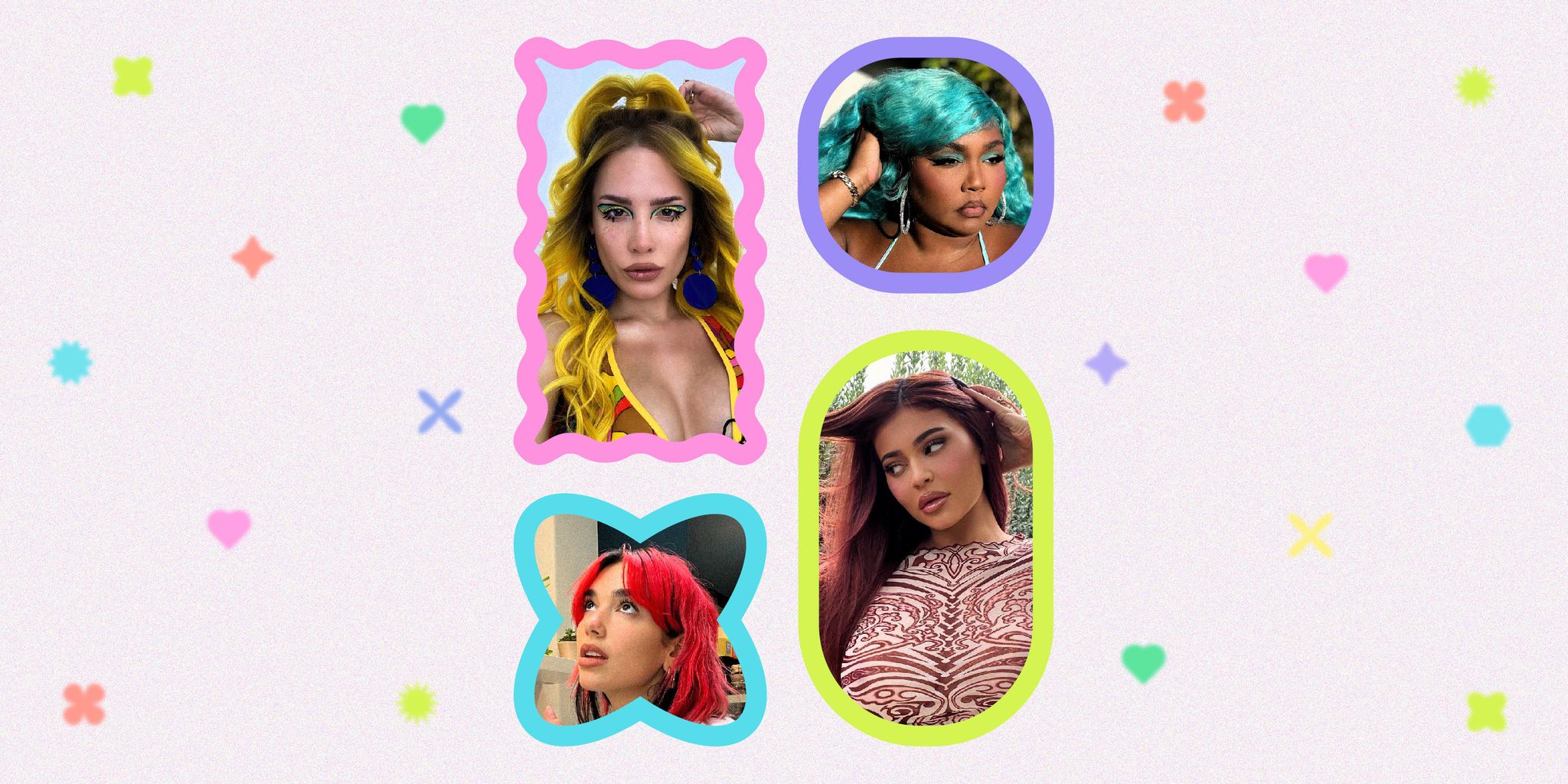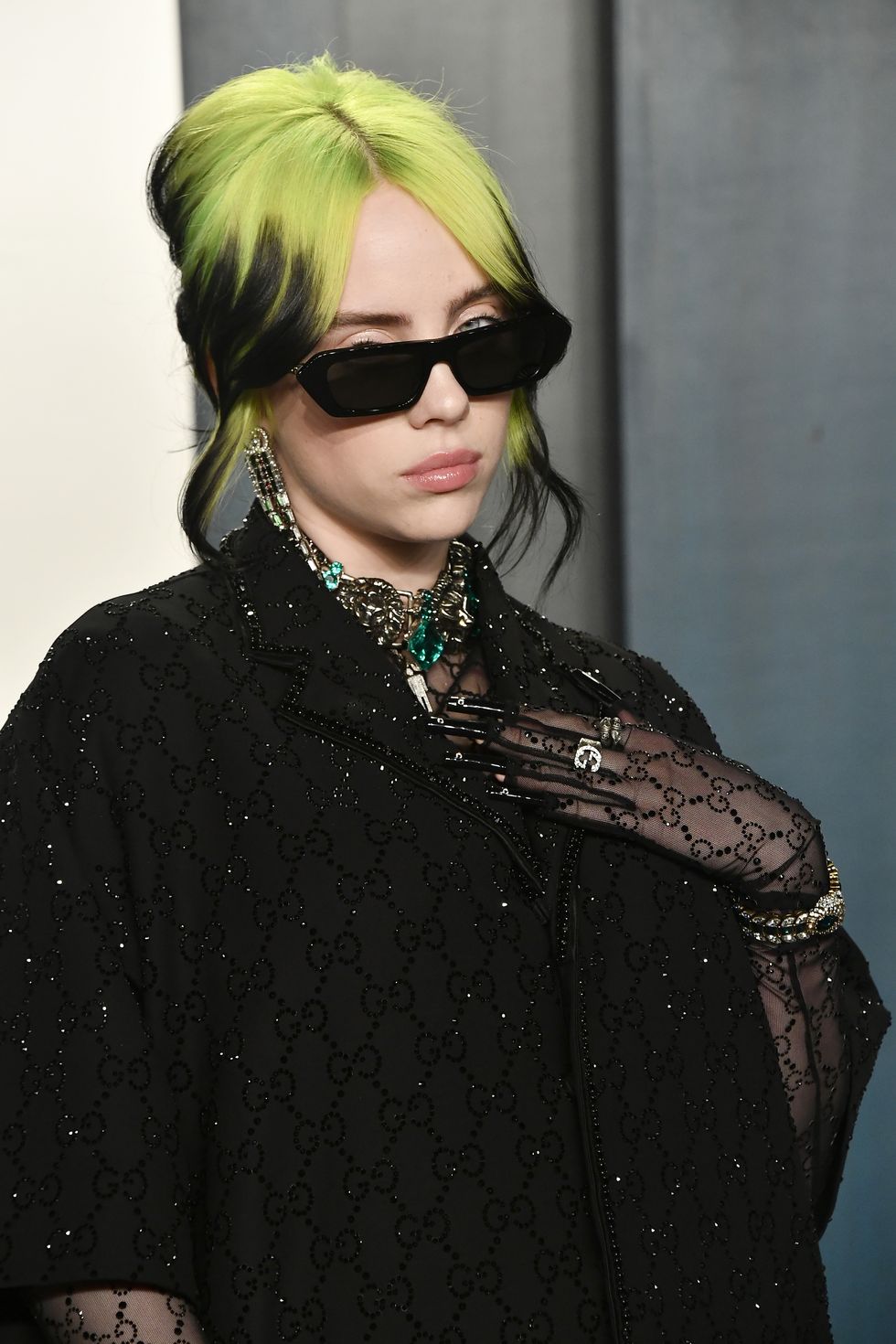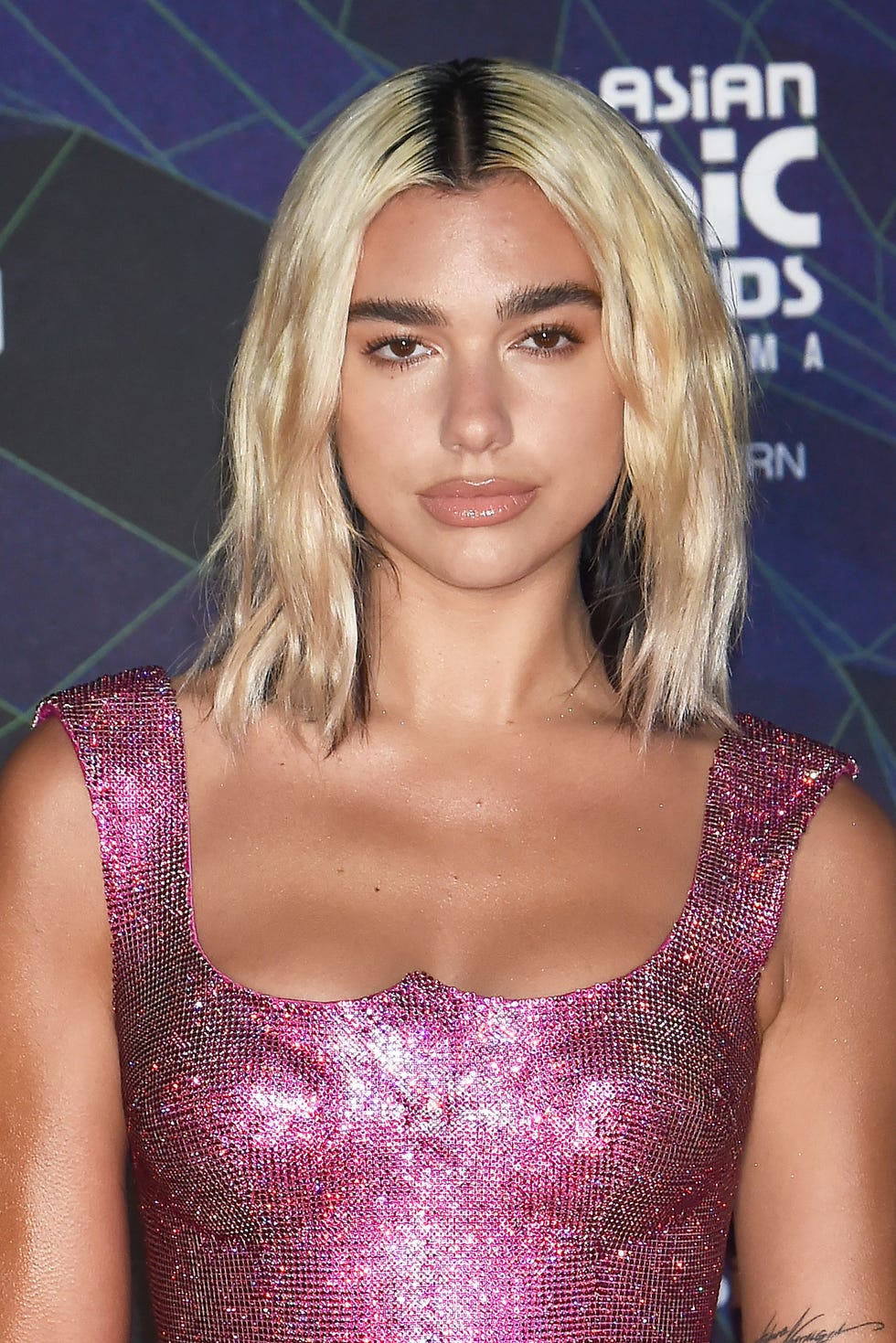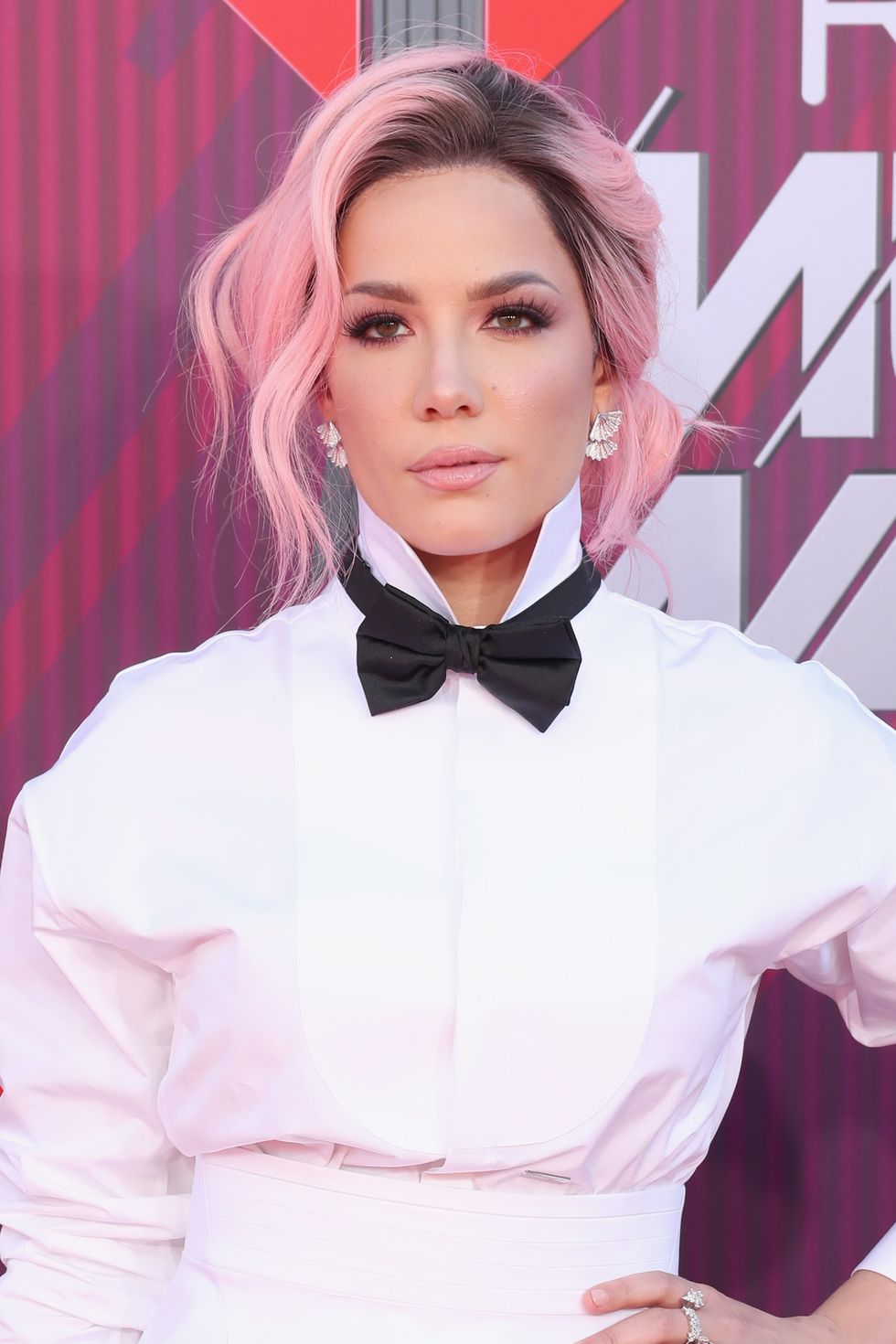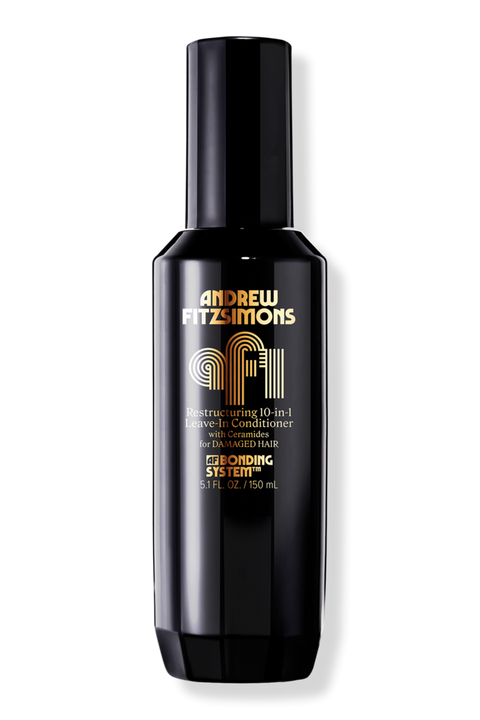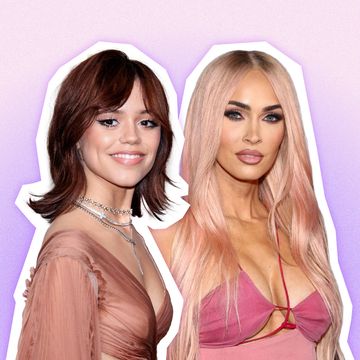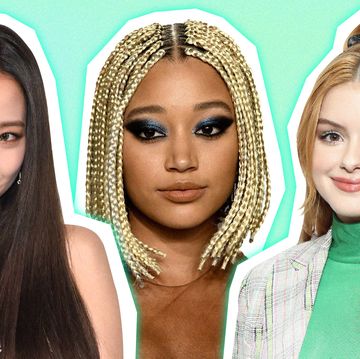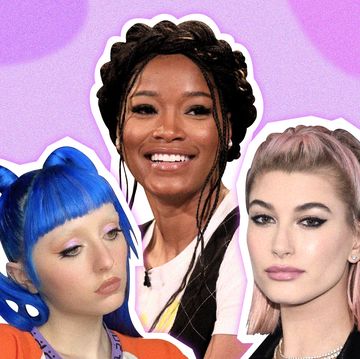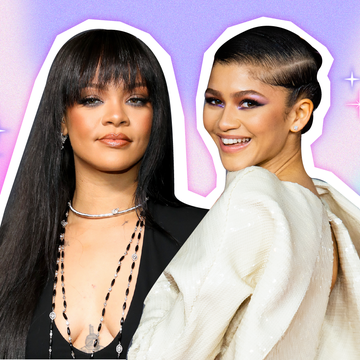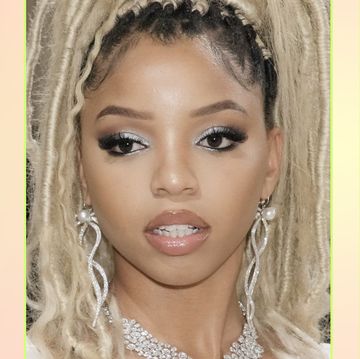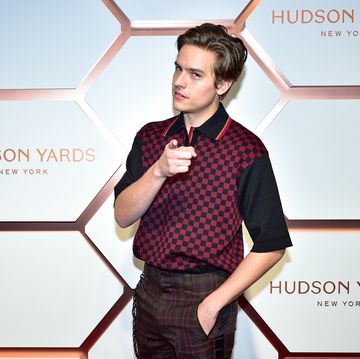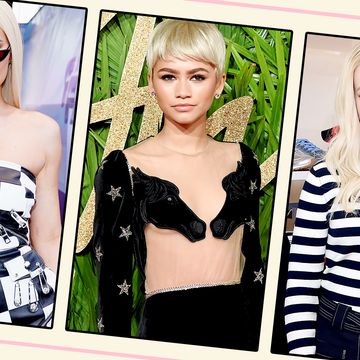It's time — you've been fighting the urge to dye your hair for a while now, and you're ready to enter your latest color era with freshly tinted tresses. Whether you're a seasoned pro who's gone through every shade on the color spectrum or a newcomer who doesn't know where to begin with a hair color switch-up, the question remains: What color should I dye my hair?
There are tons of possibilities for your next hair color — are you into a natural brunette moment, or are you looking to spruce up your strands with a vivid rainbow shade à la Billie Eilish circa 2020? Maybe you want to live the Elle Woods fantasy IRL and bleach your hair blonde. Either way, before you grab that at-home kit or book a salon appointment, there are some key things to consider when deciding what color to dye your hair.
For starters, think about your natural hair color, how much time (and money) you're willing to invest in upkeep, and who you're going to have dye your hair. Here, Schwarzkopf Professionals National Trainer and pro colorist Ian Mayer-Marszalek and celebrity hairstylists Olivia Thompson, Andrew Fitzsimons, and Rita Hazan tell Seventeen all the best practices for dyeing your hair, as well as how to choose the right hue for you.
What color should I dye my hair?
Picking the perfect shade based on your skin tone
Now, it's time to decide which color you're going to go with. Hazan emphasizes that certain rules for finding the right hair color don't really apply anymore, but that there's still a guideline that can be followed for best results. "I think every skin tone can be any color, you just have to pick the right tone. For example, darker skin tones work better with warmer hair color tones and lighter skin tones work well with cooler hair color tones," she says. Thompson and Fitzsimons also reference the undertones of their client's skin before dyeing their hair. "By matching your hair color to be similar to your skin tone, it helps bring out the best features in your face and your hair," Fitzsimons adds.
Dyeing your hair bright or rainbow colors
Keep in mind that the further from your natural color you're going, the longer it will take to achieve that look (unless you have naturally light hair). It may take several attempts to get the perfect shade. For example, bright colors may take a longer time to get your desired shade. "When dyeing your hair a natural color, it will depend on how close it is to your actual hair color, versus an unnatural color, which takes a bit more time and is a longer process," Fitzsimons says. "Dyeing your hair a few shades lighter or darker than your natural hair color will not take much effort or cause much damage to the hair unlike an unnatural color, since it involves an additional bleaching session depending on how dark your hair is."
Looking to achieve a rainbow bright hue? All four pros suggest bleaching your hair first for a clean slate so colors can appear more vibrant. "In order to achieve fantasy colors like pastels, your hair must be lifted to its highest level 9/10 — a pure white. The hair must be a perfectly clear canvas for the rainbow colors to deposit to avoid any discoloration in your color due to undertones," Thompson explains.
"Natural colors don't require quite as much work as fantasy or rainbow colors. Don't get it twisted, it can get pricey, but fantasy colors usually require your hair to be lifted, lightened, or bleached first, which in and of itself is a whole service and quite a tricky one at that," says Mayer-Marszalek, who explains that opting for rainbow and fantasy colors could likely cost a few hundred dollars and require more effort to maintain at home.
What factors should you consider before dyeing your hair?
Consider your hair type
Before you take the plunge and go for your glow-up, Thompson recommends having an understanding of your hair type, outlining expectations for maintenance (how often you'll have to dye it to maintain the color), and how much money you're willing to spend on upkeep. Hazan also suggests thinking about how often can you realistically color your hair, depending on your lifestyle and personal schedule.
When you know your hair type, including how often you've dyed your hair in the past, the process of dyeing it will be much easier on your stylist. According to Mayer-Marszalek, the natural base color of your hair will "totally and completely" determine the end result of your dyed hair. "The darker your hair, the more concentration of warmer pigments [you'll need]. So, that's going to affect how the stylist has to formulate to either embrace that warmth or try to neutralize it on the way up if you're going lighter," he says.
Keep your dye history in mind
Another factor that should influence your decision to dye is your hair history — a.k.a how many times you've dyed it in the past, how damaged it is, what your natural color is compared to the color you want to achieve, and how it reacts to certain products and ingredients.
"If your hair is damaged from heat or weather like too much sun exposure, you may want to wait a little bit longer before you dye your hair to give it some breathing [time] before you add bleach or chemicals to it," Fitzsimons explains, advising that a consultation with your go-to colorist can help in the long run as they know your hair's history and can give you the proper next steps.
Mayer-Marszalek adds that hair that has already been dyed is not as easy for colorists to work with."If you've already color treated your hair and want to do something different, that stylist is going to have to either lighten the pre-existing color in your hair out or go darker over top of it," he explains. "Color does not and can not lift the previous color, so be aware of this before committing to a crazy color you're not certain you're going to want to hold on to for a bit."
Know how many dyeing sessions you'll need
Planning on swapping your naturally dark for blonde tresses? You're most likely going to have to make multiple trips to the salon. "If your hair is dark and you want to become blonde, you will need several sessions in order to keep the integrity of your strands," Fitzsimons says. "Textured hair types are also a bit drier and porous, so you'll need to consult with your stylist and ensure to test strands before going all in."
The amount of sessions you'll need is ultimately decided by your colorist, says Mayer-Marszalek. Factors like natural texture, how thick each strand of hair is, how much hair you have on your head, your hair length, and if you have previous color on your hair all factor into how many sessions you'll need for your desired result.
"The bottom line is, the further away from what you’ve already got, the longer the time it will take or the more sessions you'll need. If you have long dark curly hair and want to have long blonde straight hair, it’s not only going to be maybe two to three sessions, but a lot of money," Mayer-Marszalek explains, emphasizing that the cost of your service will vary based on how many sessions you'll need.
The cost of dyeing hair
Depending on how much work you're putting your hair through, dye jobs could cost anywhere from $35 to more than $200. According to Mayer-Marszalek, the cost depends on the salon you go to, the stylist's level of background education, and the area you live in.
Cheaper dye jobs will likely require fewer sessions or light work, like retouching your roots. On the other hand, the more involved your treatment is — be it blonde highlights on darker hair, or transforming your tresses to a vivid rainbow color — the more money you'll have to put down for it.
"Think of it this way, the more steps involved to get you to your end result, the more money it's going to cost," he explains. While some stylists charge by the hour, others may charge by how many services are involved. If you're unsure of how much your dream dye job will cost, Mayer-Marszalek recommends making a consultation appointment to directly ask your stylist any questions before committing.
Dyeing hair at home vs. at the salon
When to dye hair at home
Looking to add a pop of color to your tresses with a streak or going for a darker color? It may be easier to opt for an at-home dye job if it's a transformation that takes little to no effort, like dyeing gray hairs or going darker. The best products and techniques are essential when it comes to dyeing at home. Mayer-Marszalek recommends keeping old towels and gloves around as the process will likely get messy.
To avoid staining the skin surrounding your hairline with dye, he recommends applying petroleum jelly like Vaseline to protect the area before working in sections.
"Working in sections allows you to be neater and more precise. If you have a rat tail comb or a comb with a metal tip, it will help you make sections easier," Mayer-Marszalek says, explaining that professional stylists typically separate hair into four sections for simpler dye jobs. "From the center of your forehead — use your nose as a guide — part the hair from front to back. Then, part the hair from ear to ear."
When to dye hair at the salon
While some dye jobs are totally achievable from the comfort of your own home, Mayer-Marszalek says that seeing a professional is essential "anytime you're lightening the hair, lifting the hair, bleaching the hair, or going lighter when a bleach is necessary."
If you're going the pro route, there are a few things you should do when getting ready for your salon appointment, like saving reference photos and conducting research on your hair type and the color you're looking to achieve. Fitzsimons suggests that beginners talk to a pro hair colorist to find recommendations specific to their hair type. Thompson adds that first-time hair dyers should start out nice and slow with subtle colors, like brunette and auburn shades or minimal highlights.
"Your colorist customizes everything for you based on your hair type," Mayer-Marszalek tells Seventeen. "We're trained to notice the subtleties of hair that a non-hairstylist wouldn’t see or think to factor in."
What is the best way to maintain dyed hair?
Once you make the change, you're going to want to keep it for as long as you can before your next salon visit. Maintaining your freshly dyed hair doesn't have to involve a million steps or products — in fact, our pros have debunked the myth that dyed hair is harder to upkeep. Below, find the best tips for maintaining dyed hair, straight from the pros.
Make sure hair is clean before dyeing
"A myth about dyeing hair is that you should come to the salon with dirty hair. Hair that is clean is going to accept a color treatment better than hair that is dirty and full of buildup," Thompson tells Seventeen, explaining that a clarifying shampoo will get the job done.
Mayer-Marszalek echoes Thompson's sentiment, adding that dye will act best on clean, dry hair. Both he and Thompson recommend shampooing your tresses at least 24 hours before you make your transformation with dye.
Once hair is dyed, avoid shampooing frequently
"The less shampooing the better. Cool water shampoos are great too because cooler water helps to tighten the hair strand, thus keeping the color inside," says Mayer-Marszalek. Aside from helping hair maintain color with tighter strands, cool water shampoos and clarifying shampoos are typically formulated to remove product buildup or residue that's in your hair or on your scalp. This ensures that your hair is completely clean, which will require fewer washes.
"Rinse if you need to daily and go through the motions of shampooing your hair while the water is running through it, but only actually use shampoo once or twice a week," Mayer-Marszalek explains. "When you do shampoo, focus the shampoo on the root area where you’re likely to get oily first. Don’t really focus too much on putting shampoo toward the lengths and ends of your hair. If they’re not oily, don't strip them of the natural oils that are trying to protect them."
Use colored shampoos to cancel unwanted tones
Depending on which color you dye your hair, you may want to maintain your new hue by swapping in a colored shampoo every other wash. For example, using purple shampoo on blonde hair will reduce warmth and yellow tones in your strands. "Purple cancels out yellow, so if you hate yellow hair, it's perfect. Be careful, though — overdoing it with purple shampoo will eventually 'dull out' your blonde," Mayer-Marszalek says. According to Thompson, blue toning shampoos have the same effect for brunettes, except they cancel out red and orange tones to achieve a true cooler-toned brown.
Keep hair moisturized with hydrating products
"As long as you are using the right products for your hair before, during, and after you get your hair colored, you will be able to maintain the color and health of your strands," Fitzsimons explains, recommending products that are rich with ceramides and castor oil, as these ingredients strengthen and repair hair from further damage. Using a hair mask, deep leave-in conditioner, and hair gloss once or twice a week will keep your hair vibrant and shiny.
Sam is an assistant news editor at Cosmo, covering all things pop culture, entertainment, and celebrity news. She previously covered those same topics along with health, lifestyle, and beauty at Seventeen. When she isn't draping her cheeks in blush, you can probably find her live-tweeting awards shows or making SwiftToks.
